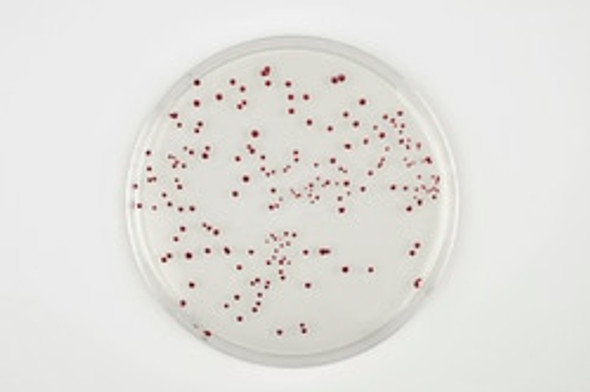Description
Perform timely and targeted antifungal therapy using Thermo Scientific™ Brilliance™ Candida Agar. This chromogenic formulation produces four different diagnostic colors for the presumptive identification of clinically significant Candida species and provides faster, easier-to-read results when compared to traditional media.
Isolate, differentiate and identify Candida albicans and Candida tropicalis from other Candida spp. within 48 hours with this selective differential chromogenic medium.
Brilliance Candida Agar contains two chromogenic substrates, which are cleaved by enzymes possessed by certain Candida species; hexosaminidase and alkaline phosphatase. The action of the enzymes on the chromogens results in a build-up of color within the colony. The color produced depends on which enzymes the organisms possess. Candida tropicalis, C. albicans and C. dubliniensis all possess hexosaminidase which results in green-colored colonies; however, other metabolic reactions of C. tropicalis produce a localised drop in pH which results in dark blue colonies. Alkaline phosphatase activity in C. krusei results in a brown or pink pigmentation, while C. glabrata, C. kefyr, C. parapsilosis and C. lusitaniae appear as a variety of beige/brown/yellow colors due to the mixture of natural pigmentation and some alkaline phosphatase activity. Experienced users may be able to differentiate these species by color and colony morphology.
The chromogenic color reactions present on an opaque background allow for fast and easy differentiation of Candida spp. especially when mixed infections are present. Chloramphenicol inhibits bacterial growth, even after prolonged incubation.
Candida spp. can be isolated from blood, brain, sputum, cerebrospinal fluid, corneal scrapings, external auditory canal, nails, paranasal sinus, skin, subcutaneous tissue, synovial fluid, urine, and vaginal specimens. Candida spp, are the most common fungal pathogen affecting humans. Infections caused by Candida spp. are diverse, ranging from superficial and local to deep-seated and disseminated. Candida albicans and Candida glabrata comprise 70-80% of yeast isolates recovered from patients with invasive disease.








